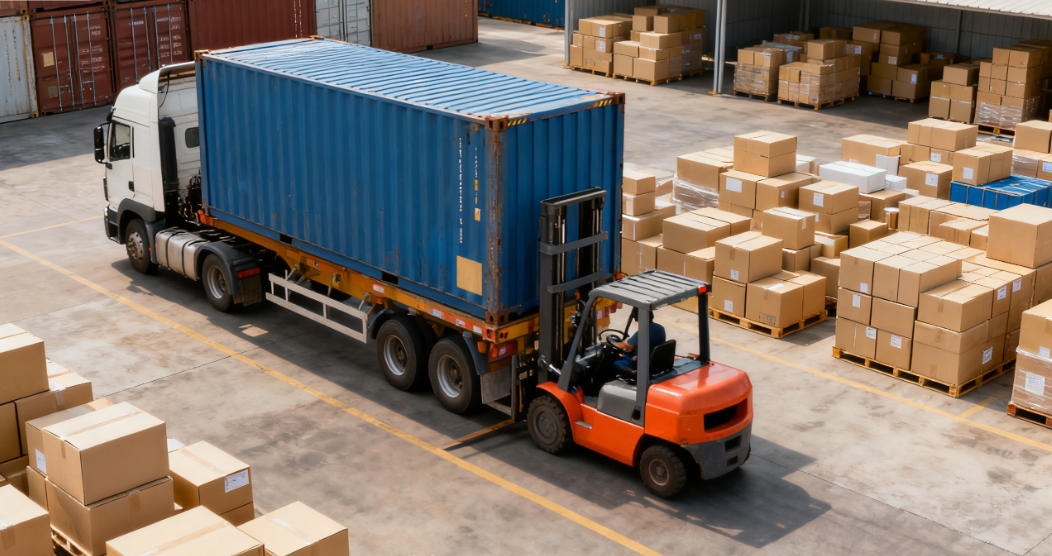🌍 Why Overseas Warehouses Are a Game Changer: Core Functions & Hidden Advantages Explained
Release time:
2025-10-20
I. [News] The Overseas Warehouse Boom Continues — A Key Tool for Chinese Exporters Going Global
In 2025, cross-border e-commerce is expanding faster than ever. According to Statista, the global cross-border retail market is expected to exceed USD 7.9 trillion this year. More than 68% of online sellers have already adopted overseas warehouse solutions.
From Amazon FBA to independent warehouses, and from China–U.S. sea freight to local delivery, the overseas warehouse has become a decisive advantage for Chinese exporters entering international markets.
II. [Data Insight] Why More Companies Are Turning to Overseas Warehouses
| Indicator | With Overseas Warehouse | Without Overseas Warehouse |
|---|---|---|
| Avg. Delivery Time | 2.5 days | 8–15 days |
| Return Rate | 3.8% | 7.2% |
| Avg. Order Value Growth | +27% | +8% |
| Per-Parcel Logistics Cost | -18% | Baseline |
Sources: GlobalTrans Logistics client data + Marketplace Pulse 2025 Report
✅ Core Logic:
By shipping goods in bulk to overseas warehouses via sea or rail, and then fulfilling orders locally, exporters achieve lower costs + faster delivery + better customer experience.
III. [Core Functions] Four Key Advantages of Overseas Warehouses
1️⃣ Pre-Stocking for Faster Fulfillment
Merchants ship goods in advance to overseas warehouses. When consumers place orders, packages are dispatched locally — usually within 1–3 days.
For markets like the U.S. and Europe, speed equals conversion and customer loyalty.
2️⃣ Localized Services for a Better Experience
An overseas warehouse is more than storage — it’s a local operations center offering:
Pick & pack, last-mile delivery, labeling, repackaging, and returns
Local after-sales support to build trust and repeat purchases
3️⃣ Cost Optimization via Bulk Transport
Compared with international small parcels, sea freight + local fulfillment can reduce per-unit logistics costs by 15–30%.
Ideal for bulky or heavy goods such as furniture, appliances, auto parts, and building materials.
4️⃣ Flexible Models for Different Business Sizes
Self-Owned Warehouse – Total control, high investment (used by large brands/platforms)
Third-Party Warehouse – Operated by logistics providers (e.g., YunExpress, Winit, GlobalTrans USA), flexible and affordable for SMEs
Platform-Integrated Warehouse (e.g., Amazon FBA) – Easy access to marketplace traffic, but limited by platform policies and higher service fees
IV. [Industry Impact] How Overseas Warehouses Are Reshaping China–U.S. Trade
E-commerce platforms (Amazon, eBay, Temu) are emphasizing local fulfillment networks.
U.S. logistics chains are becoming more integrated — from port to warehouse to final-mile delivery.
SMEs now compete globally thanks to third-party warehouses lowering entry barriers.
📈 On average, Chinese exporters with overseas warehouses see a 38% higher customer retention rate in the U.S. market.
V. [Expert Advice] GlobalTrans Logistics’ 3 Key Recommendations
1️⃣ Build a Flexible Inventory Strategy
Use sales forecasts and seasonal trends to manage pre-stocked inventory and minimize overstock risk.
2️⃣ Choose the Right Warehouse Partner
Evaluate safety, system integration, return-handling efficiency, and last-mile delivery costs.
3️⃣ Combine China–U.S. Sea Freight with Warehouse Fulfillment
GlobalTrans offers “Shenzhen → Los Angeles / Savannah / Houston” sea freight services with U.S. warehouse + delivery solutions, enabling a one-stop, cost-efficient, and time-sensitive supply chain.
VI. [Conclusion]
In today’s rapidly changing global logistics landscape, overseas warehouses are not a cost burden — they are a competitive advantage.
Whether you’re a cross-border e-commerce seller or a traditional exporter, overseas warehousing will be the key to faster growth and market expansion.
🚢 GlobalTrans Logistics
— Specialized in China–U.S. sea freight, customs clearance, trucking, and warehouse fulfillment.
📍 Shenzhen | Los Angeles | Savannah | Houston










